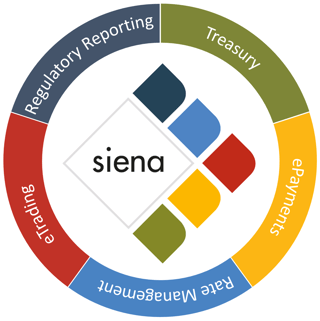In a previous blog “One Code to bind them all…”, it was noted that the Global Code covers all participants in the Foreign Exchange market – “Banks, Financial Institutions, Corporates, Alternative Liquidity Providers and Platforms”. Indeed one code to bind us all!
For the Corporate Tower and many corporate treasurers this is a new adventure. They have traditionally been more concerned with accounting standards rather than ethical execution standards and treasury automation. However, as a litany of companies can painfully attest to, FX and Treasury Exposures need to be very carefully controlled. A number of public scandals over the years demonstrate, along with a slew of unreported incidents, that inattention to the need for dynamic exposure management has very real costs, especially on earnings per share (EPS).
Every board member and audit function should be aware of the requirement to handle the treasury risks of the firm in a controlled manner. This is especially so given that any corporate treasury departments, or Corporate Treasury Centres entering into external (non-group) transactions either on their own account or on behalf of: parent companies, subsidiaries, branches, affiliates or joint ventures of the group it represents, are covered by the Global Code. That pretty comprehensive list covers any corporate doing FX transactions in the marketplace.
So what does this all mean for the corporate segment of the market? What is the quest you are being sent on?
The Global Code’s first requirement of ethics and professionalism in a firm’s behaviours is easily achieved. Education and training around fairness and integrity will ensure that staff are aware of the current standards and the implication of non-conformity. This, of course, should be periodically maintained in a continuous development scheme. Feel free to contact me if this is a requirement you have.
The Governance requirement is trickier if systems are not available to implement and monitor adherence to the letter and spirit of the code. Many corporates will have received Execution Policy letters from their banking counterparts and equally they should have, or be in the process of formulating robust and clear policies, procedures, and organisational structure to promote their responsible engagement in the FX market.
Treasury staff should also be made aware of what is “appropriate information sharing”. This way they will not put their counterparts in difficult situations by requesting information that cannot be given. The clarification on “market colour” on the other hand should come as a welcome relief to many corporates, given the way that banks misinterpreted what they could and could not share. An accurate view of current trends and developments in currency markets is essential to devising the timing of a hedging strategy and the informed placing of orders in the market.
For corporates I have spoken to, the next two requirements are the ones that need more detailed attention and are the most problematical. They are:
- Risk Management and Compliance; Market Participants are expected to promote and maintain a robust control and compliance environment to effectively identify, measure, monitor, manage, and report on the risks associated with their engagement in the FX Market.
- Confirmation and Settlement Processes; Market Participants are expected to put in place robust, efficient, transparent, and risk-mitigating post-trade processes to promote the predictable, smooth, and timely settlement of transactions in the FX Market.”
What this implies, is that disparate spreadsheets and manual processes do not maintain a robust and compliant environment. Alongside recording dealing conversations and accurately timestamping all deals, it is essential that deal information is captured into risk monitoring and position keeping systems at the point of execution. Ensuring that the impacts on the P&L of the firm are captured and risk is kept within board agreed limits at all times. Equally any novations, amendments, and or cancellations of transactions should take place in a carefully controlled and permissions based system, following the guidance given on appropriate segregation between functions. Equally robust reconciliation processes are called for and for this activity to be completed within prescribed timeframes. On top of all this and to ensure compliance regular exception reporting alongside comprehensive risk reports need to be produced frequently.
The Global Code could not be better timed for corporates as it lays the foundation for assessing the systems and controls currently in place and deciding if they pass muster in a world of increased volatility in currency markets. The black swan event in January 2015 when the Swiss National Bank removed the peg (an unknown unknown) to the volatility of the Brexit vote (a known unknown) has shown that timely currency hedging could not be more central stage. This volatility in foreign exchange rates has been responsible for billions of dollars being wiped off corporate earnings and shareholders are waking up to the risks. To obviate these risks, they are expecting their boards and treasury departments to move away from manual exposure quantification, (in the 2016 Deloitte Survey this was a challenge for nearly 60% of respondents), to more accurate measurement in real time. This should include currency exposure but as exemplified in the Global Code’s Principle 1 also credit.
“PRINCIPLE 1
Market Participants should establish consistency between their operating practices, their documentation, and their policies for managing credit and legal risk.
Operating practices (including processes for confirming and settling trades) should be consistent with legal, and other, documentation. Similarly, the use of mitigants for credit risk should be consistent with this documentation and with the Market Participant’s credit risk policies.”
Although the Global Code covers only FX, corporates need to be aware of another fixed income, currencies and commodities (FICC) initiative from the FICC Markets Standard Board (FMSB). This covers corporates and the Association of Corporate Treasurers (ACT) is also involved. The FMSB has been engaged in the Global Code and will be publishing its own standards that all members (corporates, asset owners and asset managers, market infrastructure providers such as exchanges, custodians, and investment banks) will be expected to adhere to.
Going forward the regulatory and conduct agenda is going to see corporates looking for the ability to upload their cash flows and exposures to a real-time treasury management system (TMS) to enable them to view dynamically the risks they are exposed to and to formulate the hedges they require which they can then execute in the market in a fully compliant manner. A TMS with role based permissioning, real-time position keeping and credit checking capabilities with inbuilt compliance and regulatory modules which can accurately report exposures and hedges with attendant profit & loss analysis is going to be essential. Coupled with the ability to aggregate into a best price liquidity from a multitude of sources and to benchmark executions, it will enable proper control of the endless cycle of pre-trade, trade and post-trade and enable you to be compliant with best practices as well as giving a welcome boost to treasury departmental profitability. All this in the Eurobase siena Treasury Management System and Order Management System is complemented by a state of the art ePayments module giving any corporate treasury all the tools required to complete the quest.
In conclusion and as stated in the Deloitte Survey (and it is certainly proving an accurate prediction)
“2016 is expected to exhibit similar levels of uncertainties, with different expectations around interest rate policies, quantitive easing removals, potential depegging of some currencies and other actions by global economies all driving FX volatility.”
This will certainly continue into 2017 and beyond. Equipped with the right weapons, the quest to conquer the forces of the Dark Lord will enable the Treasury Fellowship to unleash the power of the One Ring of a centralised treasury management system to the benefit of the bottom line and ensure corporate EPS suffers a minimal hit in these volatile times for financial markets.

